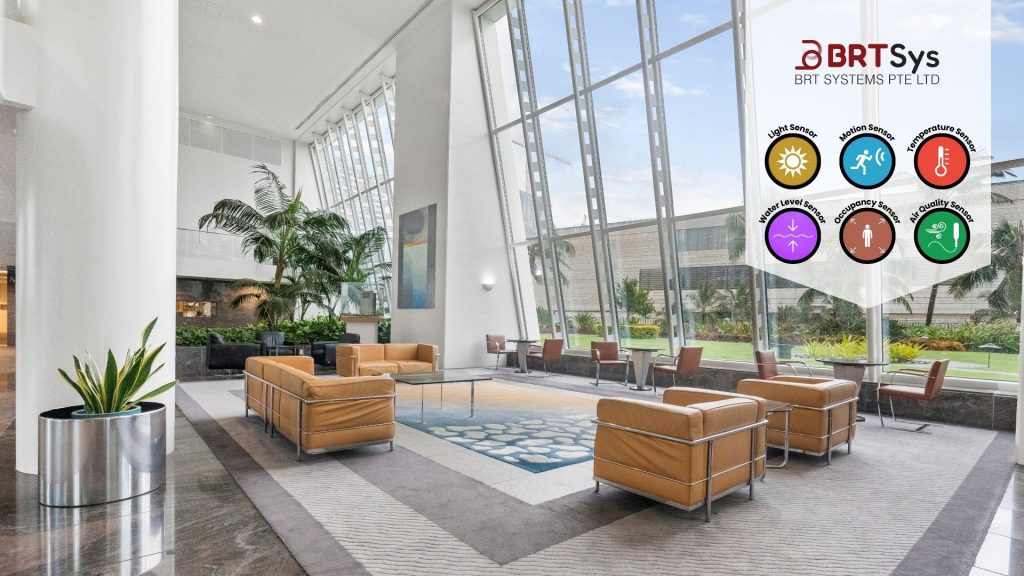
Modern eco-friendly buildings are no longer passive structures—they’re intelligent ecosystems that respond dynamically to their environment. At the core of this transformation are sensors and actuators, the dynamic duo of energy automation.
Sensors can gather real-time data about environmental conditions, occupancy, and energy usage. This data provides the foundation for intelligent decision-making.
Some common types of sensors used in energy-efficient buildings include:
- Temperature Sensors: Record temperature variances within the target building
- Air Quality Sensors: Monitor key parameters such as CO₂, Volatile Organic Compound (VOC) levels, and humidity to optimize ventilation
- Motion and Occupancy Sensors: Detect presence within defined zones
- Light Sensors: Measure ambient light levels
- Energy Monitors: Track power consumption for different zones within the building and for individual devices
- Water Meters and Sensors: Monitor water usage and detect leakage
These sensors enable continuous monitoring, as well as fault detection and predictive maintenance, ensuring systems operate at peak efficiency. Smart Building systems combine data from sensors with energy-efficient policies for green buildings to enable energy savings and optimise the use of resources.
Actuators are used to control mechanical systems such as HVAC, lighting, airflow systems, and much more. Smart relay and switching actuators offer a flexible way of controlling building systems, enabling or disabling electrical circuits, based on energy optimization logic. Motors, Solenoids and Servos can be connected to actuators allow for precise control of, fans, pumps, blinds within the smart building, bringing benefits such as:
- Temperature Regulation: Regulating HVAC systems to maintain comfort while minimizing energy use
- Air Quality Improvements: Optimizing ventilation strategies to ensure good air quality
- Smart Occupancy Control: Enabling lighting and climate control only when required
- Lighting Intensity: Adjusting artificial lighting based upon natural light levels
- Smart Metering: Allows recording and reporting of energy and utility usage to monitor compliance with policies
Together, sensors and actuators form a closed-loop system that continuously adapts to changing conditions, reducing waste and running costs, enhancing comfort for all occupants, and helping reduce the impact on the environment. For example,
- Morning sunlight detected by ambient light sensors, causes artificial lights to be dimmed.
- Rising indoor temperature recorded by temperature sensors, prompts actuators to adjust HVAC settings.
- Attendees enter a meeting room, occupancy and motion sensors detect presence and adjust lighting and airflow via actuators.
- CO₂ and Air Quality sensors detect a decrease in air quality in a busy office, and the system responds by opening vents and activating fans for fresh air
All of this happens seamlessly, without human intervention.
Why it matters:
- Energy Savings: Buildings can significantly cut energy usage with smart sensors and controls
- Sustainability: Reduction of carbon footprint through optimized resource usage
- Comfort & Productivity: Environments that adapt to human needs improve well-being
Modern smart building systems have evolved to include a much wider range of sensors and actuators which can work together to make buildings more eco-friendly and improve comfort for occupants. From sensing to saving, the synergy between sensors and actuators is revolutionizing how buildings consume energy and their environmental impact. It’s not just smart—it’s sustainable.
Industry Insights contributed by BRT Systems Pte Ltd
